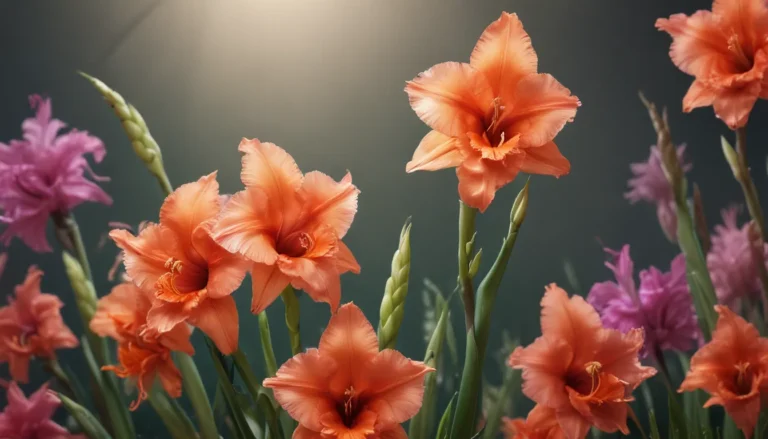The pictures we use in our articles might not show exactly what the words say. We choose these pictures to make you interested in reading more. The pictures work together with the words but don’t take their place. The words still tell you the important facts.
Welcome to the enchanting world of Carpinus, also known as hornbeams, a fascinating genus of trees and shrubs that beckons nature lovers and plant enthusiasts alike. In this article, we will unravel eight captivating facts about Carpinus that showcase their unique qualities, ecological benefits, and cultural significance. From their versatile characteristics to their practical uses in landscaping and horticulture, Carpinus trees are truly a marvel of nature.
The Diversity of Carpinus:
Carpinus belongs to the family of Betulaceae and encompasses approximately 40 recognized species. These deciduous trees and shrubs are native to various regions around the world, including Europe, Asia, and North America. With a wide variety of sizes, leaf shapes, and geographic distributions, Carpinus trees offer a diverse range of options for arborists and enthusiasts seeking to add beauty to urban and rural landscapes.
The Beauty of Carpinus in Landscaping:
Carpinus trees are highly valued for their ornamental beauty and practical uses in landscaping and horticulture. Their dense wood, vibrant green leaves with serrated edges, and compact growth habit make them a popular choice for parks, gardens, and streets. Whether used for shade, ornamental purposes, or as privacy barriers, Carpinus trees add a touch of elegance to any setting.
- Carpinus trees are versatile with dense wood, vibrant green leaves, and compact growth, making them perfect for landscaping and providing habitat for wildlife.
- Approximately 40 species of Carpinus offer a wide variety of sizes, leaf shapes, and geographic distributions, making them popular for furniture making, cabinetry, and enhancing urban and rural settings.
The Strength and Beauty of Carpinus Wood:
The wood of Carpinus is prized for its density, durability, and resistance to decay. Used in furniture making, cabinetry, tool handles, and flooring, Carpinus wood is known for its strength and hardness. Its density also makes it suitable for carving and turning, allowing artisans to craft intricate and durable pieces.
The Vibrant Foliage of Carpinus Leaves:
One of the distinctive features of Carpinus trees is their vibrant green leaves with serrated edges. During the autumn season, these leaves transform into shades of yellow, orange, and red, creating a stunning display of fall foliage. The changing colors of Carpinus leaves add a touch of beauty to the landscape and evoke a sense of seasonal enchantment.
The Unassuming Flowers of Carpinus:
Hornbeams produce small, inconspicuous flowers that often go unnoticed. These flowers, which appear in spring before the leaves emerge, are primarily wind-pollinated. While not showy in appearance, the flowers of Carpinus trees play a crucial role in pollination and the reproductive cycle of these remarkable plants.
- Carpinus leaves are serrated and vibrant green, turning shades of yellow, orange, and red in the autumn, creating a stunning fall foliage display.
- Hornbeams produce small, inconspicuous flowers that are wind-pollinated and play a vital role in the reproductive cycle of the trees.
The Compact Growth of Carpinus Trees:
Carpinus trees are prized for their dense, compact growth habit, making them ideal for hedge or screen plantings. Their tight form allows for easy trimming and shaping, creating uniform boundaries or privacy barriers. The versatility of Carpinus trees in adapting to various pruning techniques makes them a popular choice for sculpting and maintaining desired shapes in the landscape.
The Ecological Role of Carpinus:
Beyond their aesthetic beauty, Carpinus trees play a significant role in providing habitat and food for wildlife. The dense foliage and fruits of Carpinus trees offer shelter and nourishment to birds, squirrels, and other small mammals. These trees contribute to biodiversity by supporting a variety of animal species and enhancing the ecosystem in which they thrive.
The Medicinal Properties of Carpinus:
In addition to their ecological benefits, Carpinus trees have been traditionally used for their medicinal properties. Some species of Carpinus have leaves and bark with anti-inflammatory and astringent properties, making them valuable in traditional herbal medicine. The healing properties of Carpinus further underscore the diverse uses and significance of these remarkable trees.
Conclusion: Embracing the Enchantment of Carpinus
In conclusion, Carpinus, with its versatile characteristics, ecological benefits, and cultural significance, stands as a testament to the wonders of the natural world. Whether you are a plant enthusiast, a gardener, or simply curious about the beauty of nature, exploring the world of Carpinus is a rewarding journey. Each fact and characteristic of Carpinus unveils a captivating story of resilience, beauty, and harmony within the natural landscape.
FAQs: Exploring the World of Carpinus
- What is Carpinus?
-
Carpinus is a genus of flowering plants commonly known as hornbeams, belonging to the Betulaceae family.
-
Where can I find Carpinus?
-
Carpinus species can be found in various regions across the globe, thriving in temperate climates and adaptable to a wide range of soil conditions.
-
What are the medicinal properties of Carpinus?
-
Some species of Carpinus have anti-inflammatory and astringent properties in their leaves and bark, making them valuable in traditional herbal medicine.
-
Are Carpinus trees important for the environment?
-
Yes, Carpinus trees play a crucial role in providing habitat and food for wildlife, contributing to biodiversity, soil stabilization, and acting as carbon sinks.
-
Can I grow Carpinus in my garden?
- Absolutely! With proper care and maintenance, Carpinus trees are a popular choice for gardeners due to their attractive foliage, compact size, and hardiness.
As you embark on your journey of discovery and appreciation for the remarkable qualities of Carpinus, may you find inspiration and wonder in the intricate beauty of these extraordinary trees. Let the enchantment of Carpinus awaken your curiosity and deepen your connection to the natural world around you.






